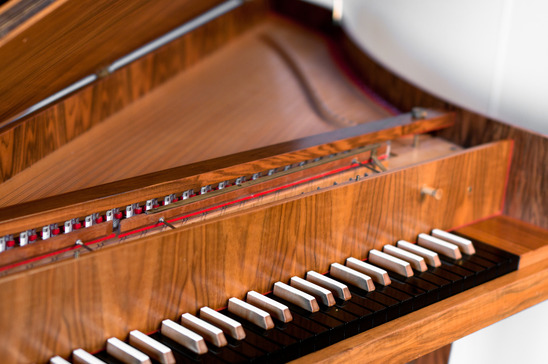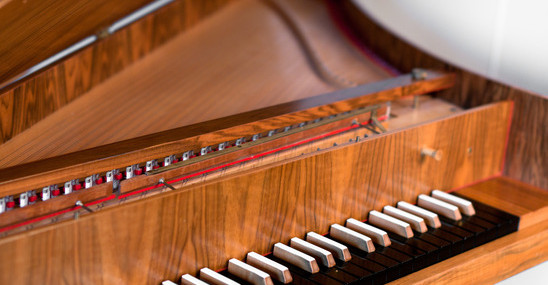The spinet piano goes back to the Great Depression.
In the 1930s, times were tough. People were still recovering from the economic downturn that rocked society. They remembered the good times from before; yet no longer had the income to live life the way they used to. Although many wanted a piano for entertainment, the traditional uprights and grand pianos were simply out of reach.
And so the spinet piano was born.
Spinet pianos were manufactured between the 1930s and the 1990s. They were smaller in size, cheaper in price, and inferior in sound.
The casing for a spinet piano is smaller than that of a regular piano. Because of the smaller size, the strings are shorter. Shorter strings reduce the quality of the sound, especially in the deeper keys.
And because of the smaller casing, it also impacts the mechanism used to produce sound. The keys are shorter in order to make room for the drop action. A traditional piano makes sound by having a striking key cause a hammer to strike the piano string, resulting in immediate sound. In a spinet, the action is dropped below the keys. When a key is struck, the movement pulls on rods to engage the action, resulting in poor leverage and thus a poorer quality of sound.
While many of the early spinets were of good quality, in many cases quality was compromised as time went on. Because of a huge increase in competition in the 1950s and 1960s, price came down along with workmanship. Cheaper parts were used to keep costs down, meaning quality inside and out was shoddy at best. While spinets did the job for a little while, the musician playing it quickly learned the differences between spinets and traditional upright or grand pianos.
Because of limited space inside the spinet piano, even a simple tuning can be a monumental task. In many cases the entire spinet piano must be disassembled to work on any portion of it. All eighty eight connecting rods must be disconnected and tied up, then all of the keys must be removed before the action can be lifted out and repaired. Even once all parts have been removed, it can still be a difficult process to tune.
For all these reasons and more, restoring a spinet piano is usually performed on a case by case basis. Have more questions about your own restoration project? Have a spinet piano you aren’t quite sure of its value? Give us a call today.



Speak Your Mind